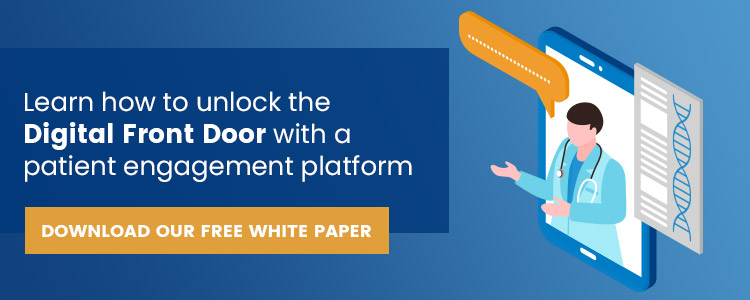What is the Patient Journey?
- The Bridge Team
- December 02, 2021

As the consumerization of the healthcare industry continues, higher patient expectations have altered every touchpoint of the healthcare journey. Even before an appointment is booked, the patient journey has begun. But what is it, why should we discuss it and what measures can be taken to improve it?
The patient journey encompasses every interaction a patient has within the health system, long before going through the doors of a healthcare facility. From marketing, education to consultations or outpatient care, every point of contact pre- to post-visit is a part of the overall experience and can serve to either improve that journey or make it difficult for all involved.
What does the patient journey look like?
Although booking an appointment would be a logical starting point, in reality, contact with the healthcare system is more extensive than that. Patients engage through education, research, and even awareness of their own symptoms. Providers, therefore, have the job of making them cognisant of their services in the first place. Whether that takes place through marketing, loyalty, or referrals, these are all early touchpoints of the patient journey.
Once a healthcare provider is decided upon, perhaps an appointment will be made and medical records can be submitted. Each one of these interactions is an opportunity for increasing patient engagement and limiting the number of barriers consumers have for accessing their healthcare. Patients should be able to conveniently find a provider, check what their financial responsibilities may be, understand their insurance coverage, and essentially be able to set themselves up for a successful visit long before it’s made in as few steps as possible. In the lead up to a visit, providers should ensure they send timely patient appointment reminders/messages to avoid no-shows.
The next stage of the patient journey takes place during the visit. This is where providers will engage the most directly with their patients. It includes the check-in process, queuing, and the actual consultation, diagnosis, and treatment. Whether that be online or in-person, it’s where organizations can really show the quality of their care.
Once a visit has concluded, the patient journey continues. Much of this stage centers around retaining patients and gaining honest feedback in order to streamline services and foster loyalty. The patient will be discharged from the clinic or hospital, receive post-treatment instructions, and maintain communication with their provider as their healthcare experience is tracked. Anything from refilling prescriptions and medication reminders to receiving lab results or paying bills, the post-visit experience is often overlooked but integral to the impression an organization makes.
The importance of understanding the patient journey
Providers should strive to deliver a personalized experience that takes into consideration each patient’s unique needs to improve the care journey. Tailoring care to healthcare consumers’ individual preferences such as preferred communication modality for appointment reminders and personalized patient education is not only important but expected.
The patient experience has also become pivotal for attracting and retaining patients. Actively gaining timely patient feedback will aid in finding pain points and smoothing out those problems. A positive relationship with a provider makes patients more engaged in their care and creates loyalty towards your organization. Although 70% of patients tend to share a positive experience with others, 76% will share a negative one so it’s critical to the survival of your practice to understand the healthcare experience from the patient’s perspective.
At the end of the day, keeping customers as healthy as possible for as long as possible is the ultimate goal, and improving every touchpoint of the patient journey will greatly help in achieving that goal.
- Arias, M., Rojas, E., Aguirre, S., Cornejo, F., Munoz-Gama, J., Sepúlveda, M. and Capurro, D. (2020). Mapping the Patient’s Journey in Healthcare through Process Mining. [online] International Journal of Environmental Research and Public Health. Available at: https://www.mdpi.com/1660-4601/17/18/6586
- Johnson, T. (2019). The Importance of Physician-Patient Relationships Communication and Trust in Health Care. [online] Duke Center for Personalized Health Care. Available at: https://dukepersonalizedhealth.org/2019/03/the-importance-of-physician-patient-relationships-communication-and-trust-in-health-care/
- Wolf, J. (2021). Consumer Perspectives on Patient Experience 2021. [online] The Beryl Institute. Available at: https://www.theberylinstitute.org/store/viewproduct.aspx?id=18017946#
- PatientTrak. (2021). Touchpoints of the Patient Journey. [online] PatientTrak. Available at: https://www.patienttrak.net/news/touchpoints-of-the-patient-journey/
